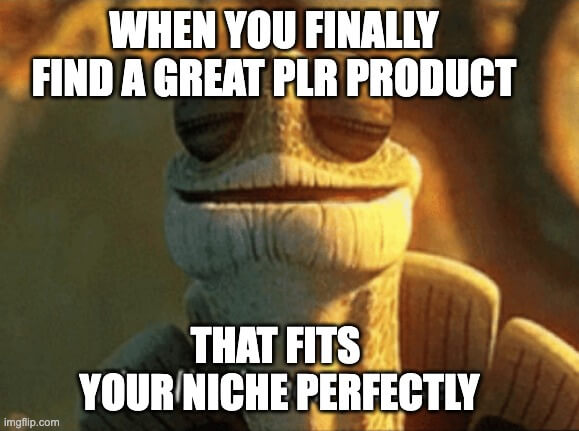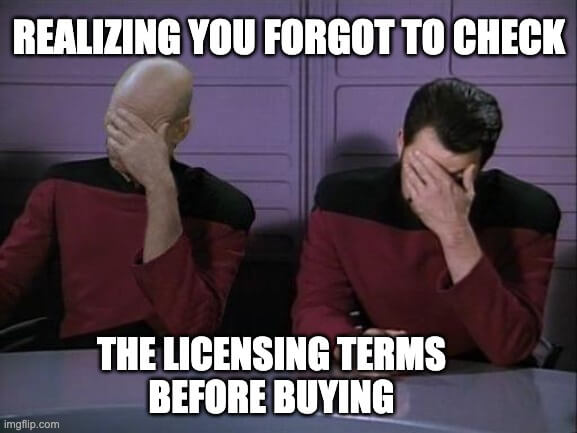You can buy digital products to resell from specialized marketplaces like PLR.me, Big Product Store, IDPLR, and Content Sparks, which offer thousands of ebooks, courses, templates, and software. These platforms provide Private Label Rights (PLR) and Master Resell Rights (MRR) products that you can legally rebrand and sell as your own.
Where to Buy Digital Products to Resell (2025)
| Marketplace | Product Types | Number of Products | Licensing Options | Pricing Structure | Quality | Update Frequency | Special Features |
|---|---|---|---|---|---|---|---|
| PLR.me | Self-help courses, coaching materials, wellness eBooks | 18,809+ | PLR | Free trial (2 credits/mo) Credits from $0.60 each Unlimited plan: $997/year | Premium (native English) | 85+ new products monthly | AI editing tools, professional formatting, 14-day refund |
| Big Product Store | Ebooks, software, graphics | 15,000+ | PLR, MRR | $19.90/month unlimited | Medium | Daily | Bulk download options |
| Content Sparks | Business courses, email templates | 1,000+ | White-label | $19-$297 tiers | Premium | Monthly | Money-back guarantee |
| IDPLR | Ebooks, videos, templates | 12,590+ | PLR, MRR, RR | $29/month | Medium-High | Weekly | Web hosting included |
| PLR eBook Supplier | Ebooks, Canva templates | 370+ | PLR | $7-$97/products | High | Quarterly | Done-for-you stores |
| PLRProducts | Articles, software | 1,000+ | PLR, MRR | À la carte | Variable | 100+/month | Crypto payments |
Takeaways
- PLR.me Quality Guarantee: Uses only native English writers with industry experience and professionally edits, formats, and designs all content
- Big Product Store Value: Offers unlimited downloads for $19.90/month with no long-term commitment required and access to over 10,000 info products
- IDPLR Lifetime Option: Provides lifetime access to 12,590+ PLR products with weekly updates for a one-time payment of $197 (includes 30-day money-back guarantee)
- PLR eBook Supplier Focus: Specializes in well-written ebooks with attractive cover designs across various niches, with prices typically ranging from $1.99 to $9.99
- Membership vs. Individual Purchase: Big Product Store operates on a membership model ($19.90/month) while PLR eBook Supplier offers both individual product purchases and membership options

A Glaring Problem With Resell Rights Digital Products
The problem with acquiring resell rights to digital products is that anyone can just buy them. This means if you were to sell the digital product “as is”, you’ll have a hard time standing out… and an even harder time selling.
The solution is to offer a unique, relevant, and useful bonus that only YOU can provide when customers buy your digital product.
And this is what [The Bonus Matrix] is all about. I’ll show you the exact USEFUL bonus to provide when you buy resell rights products. Click below:

Buying Considerations
When choosing a place to buy digital products from, consider product quality, pricing structure, niche variety and customer support.

It’s often a good idea to start with a platform that offers some free products so you can test the quality before buying.
In this digital age, selling online is getting more and more popular and one of the most attractive option is reselling digital products. But where do you find these products and how do you get started? This guide will cover everything you need to know about buying and reselling digital products.
.
Wanna start selling digital products the simple way? For a limited time, pay $0/month + 0% commission (totally free) to claim your CartMango account & launch your digital offer in 1 minute. Free migration included.
.
What are Digital Products
In case you don’t know, digital products are intangible goods that can be sold and delivered online. They don’t require inventory management or shipping.

That’s why it’s an attractive option for entrepreneurs who want to start an online business with low costs.
Here are some examples of digital products:
eBooks: Digital books on various topics from fiction to how-to guides.
Online courses: Video or text based educational products / content on specific topics.
Templates: Pre-designed layouts for websites, graphics or business documents.
Software and apps: Programs or applications that users can download and use.
Stock photos and videos: High quality images and footage for commercial use.
Music and audio files: Sound effects, background music or audio books.
Printables: Downloadable files that customers can print at home like planners or wall art.
Digital art: Original artwork in digital format.
The market for digital items is growing, more people than ever are looking for convenient and instant solutions to their problems. This presents a great opportunity for online sellers.
No more experiencing this:

For example the e-learning market alone is expected to reach $325 billion by 2025, that’s a huge potential in just one segment of digital products.
Benefits of Reselling Digital Products
Reselling digital products has several advantages that make it a attractive business model:
Low startup cost: You don’t need to invest in inventory or worry about storage space. That means you can start your business low cost.
Generate passive income: Once set up, digital products can be sold multiple times without any additional work. That means you can earn money even while you sleep.
Global reach: You can sell to customers worldwide without worrying about shipping logistics. That opens up a huge market for your products.
Flexibility: You can run your business from anywhere with an internet connection. That means you can work on your own terms.
Scalability: It’s easy to add more products to your product line without significant additional cost. You can add new products or variations quickly to meet market demand.
High profit margins: Without the cost of physical products you can keep a larger portion of your sales as profit.
Fast delivery: Customers can get their purchases instantly, that means higher satisfaction rate.
Easy updates: You can update or improve your digital products quickly based on customer feedback or market changes.
Licensing for Digital Products
Before you start reselling digital products you need to understand the different types of licenses. These licenses determine what you can and can’t do with the digital products you purchase:

1/ Private Label Rights (PLR)
This is the most flexible. You can modify and rebrand the product as your own. You can sell it as is or make changes to suit your audience. For example you can buy a PLR ebook on healthy eating, add your own recipes and tips and sell it under your brand name.
2/ Master Resell Rights (MRR)
This allows you to resell the product and its resell rights to others. But you can’t modify the product. For example if you buy an MRR software tool you can sell it to customers and also sell the right to resell it to other marketers.
3/ Resell Rights (RR)
This allows you to resell the product to end-users but not to other resellers. You can’t modify the product or claim it as your own. For example you might buy a RR video online course and sell it to students but you can’t alter the content or allow your customers to resell it.
Always read and understand the licensing terms before purchasing or reselling any digital product. Violating these terms can lead to legal issues and damage to your business reputation.

Suppliers and Products to Evaluate
When reselling digital products, you need to evaluate both the suppliers and the products themselves. This careful evaluation will ensure you’re offering high quality products to your customers:
1/ Research Supplier Reputation
Look for reviews and testimonials from other customers. A good supplier should have a track record of providing quality products and good customer service. Check online forums and social media for honest feedback from other resellers.
2/ Assess Product Quality
Download samples or preview products when possible. Look for well written, professionally designed products that provide real value to customers. Check:
Writing quality: Is the content well written, engaging and error free?
Design: Are the graphics and layouts professional and visually appealing?
Usefulness: Does the product solve a real problem or provide valuable information?
Uniqueness: Does it offer something different from what’s already out there in the market?
3/ Check Product Relevance
Ensure the products are relevant to your target audience. Stay up to date with market trends to choose products that are in demand. You can use tools like Google Trends or social media listening to gauge interest in different topics.
4/ Consider Customization Options
Products that can be easily customized can help you stand out in the market and serve your audience better. Look for products with editable files (like Word documents or Photoshop files) rather than just PDFs.
5/ Evaluate Sales Materials
Many PLR products come with additional marketing materials like sales pages or email swipes. Check the quality of these materials as they can save you time and effort in promoting the product.
6/ Check Update Frequency
For certain types of products like software or courses on rapidly changing topics, you need to choose suppliers who update their products regularly.
7/ Consider Competition
Look at how many other people are selling the same or similar products. While popular products can mean a good market, too much competition can make it harder to stand out.
8/ Price vs Value
Compare the price of the product with the value it offers to your customers. Remember, the cheapest option isn’t always the best if it means sacrificing quality.

By thoroughly evaluating suppliers and products, you’ll be better positioned to offer high-quality popular digital products that your customers will love.
Digital Product Reselling Strategies
To resell digital products successfully:
Rebranding and customization: Add value to PLR products by customizing them for your audience. This could be updating content, adding your branding or combining multiple products into one. For example, take a PLR ebook on general fitness, add specific workout routines and meal plans and rebrand it as a body transformation guide.
Pricing: Research your competition and your target market and price accordingly. Offer introductory discounts or bundle products for more value. Consider tiered pricing for different levels of access or support.
Marketing: Use content marketing, social media and email marketing to promote your products. Create blog posts or videos that show the value of your products. For example if you’re selling a digital cookbook, create short cooking videos featuring recipes from the book.
Online presence: Build a professional website and active social media profiles to establish credibility and connect with potential customers. Share valuable content related to your products to build trust and authority in your niche.
Niche: Focus on a specific niche or target audience. This allows you to become an expert in your field and tailor your products better.
Product bundling: Create attractive packages by combining related products. This increases the perceived value and encourages bigger purchases.
Continuous learning: Stay up to date with market trends and improve your products and digital marketing strategies based on customer feedback and performance data.
Affiliate marketing: Set up an affiliate program to incentivize others to promote your products. This can expand your reach big time.
Upselling and cross-selling: Offer complementary products or upgraded versions to customers who have already bought from you.
Customer retention: Focus on building long term relationships with your customers. Offer great support, create a loyalty program or provide exclusive content to encourage repeat business.
Where to SELL Your Digital Products
Once you have products to sell you’ll need a platform to reach customers. Here are some popular options, along with their pros and cons:
1/ CartMango
CartMango is a simple cart/checkout tool for solo digital product owners. Disclosure: This is our tool and the tool’s main focus is to boost sales conversions for our users.
There’s nothing to install.
Just login to your account
Tell us how much your digital product costs, upload your product files, grab a buy link
Share the link via social media, emails, etc.
Pros: Pay $0/month + 0% commission (completely free). No platform lock-in. Free migration.
Cons: Not suitable if you only sell physical products or run a huge company.
Why free? Here’s the catch
.
2/ Your own website
Using platforms like WordPress with WooCommerce gives you full control over your store and customer experience.
Pros: Full control, no platform fees, can build your brand
Cons: Requires more technical knowledge, responsible for all aspects of site management
3/ Etsy
While known for handmade items, Etsy also allows the sale of digital products and has a large, built-in audience.
Pros: Large existing customer base, easy to set up
Cons: High competition, fees can eat into profits
4/ Gumroad
This platform is specifically designed for selling digital products and offers features like affiliate programs and email marketing tools.
Pros: Designed for digital products, easy to use, good analytics
Cons: Super expensive (10% transaction fees for every sale, on top of Stripe payment processing fees)
5/ Sellfy
Another platform tailored for digital product sales, Sellfy provides features like customizable storefronts and built-in marketing tools.
Pros: Specifically for digital products, includes marketing features
Cons: Monthly fee may be high for beginners
6/ Creative Market
Ideal for design-related digital products, this platform caters to a creative audience.
Pros: Great for design products, large creative community
Cons: High competition, limited to design-related products
7/ Teachable
If you’re selling online courses, Teachable provides a robust platform with features like course creation tools and student management.
Pros: Specifically designed for online courses, includes many helpful features
Cons: Monthly fees, may be overkill if you’re not focusing on courses or just have a few simple downloadable digital files
8/ Amazon Kindle Direct Publishing (KDP)
For ebooks, Amazon’s KDP platform offers access to a huge market of readers.
Pros: Massive audience, easy to use
Cons: High competition, less control over pricing
When choosing a platform consider your technical skills, the types of products you’re selling, your target audience and the fees involved. Many sellers find success using a combination of platforms to maximise their reach.
Marketing and Selling Digital Products
Your first sale is the most important. If this is a side hustle for you, make sure to treat is seriously because a side hustle won’t go anywhere if you don’t put your focus into it.
To successfully sell your digital products you’ll need a full marketing strategy.
1/ Build a Sales Funnel
Unless you’re a well-known celebrity, not everyone is going to buy your product the first time they see it.
Plus, this is digital products we’re talking about. Not physical products where the benefit is clear. E.g. I buy a pen because I want to use it to write. Or I buy detergent because I need to wash my clothes.
The goal of the sales funnel is to nurture people from “seeing you as a stranger” to “seeing you as someone trustworthy”.
You do that by capturing their email address via a lead magnet, and then you consistently email them with useful content that help relieve some of their problems. If they want to fully solve their pain points, they’ll need to buy your digital product.
2/ Use Social Media
Pick 1-2 social media platforms where your “perfect customers” hang out.
Why only 1 or 2? Because focusing on a few is better than trying to be omnipresent on every social media platform.
E.g. If you sell design templates, you want to to go Instagram and Pinterest and start posting helpful content there. Then as you post these valuable tips, they’re also exposed to your offers.
3/ Implement Email marketing
Build an email list of subscribers who’re interested in your topic and what you do.
Most people won’t buy now, and that’s ok. Treat this as “playing the long game”. Write regular newsletters/broadcast emails that are useful and entertaining. Then sell at the end of your email content.
Also create a Welcome Email Sequence that consists of 3-5 emails to automatically “welcome” new subscribers into your world.
Remember, to them you’re still a stranger. Don’t wait until the next newsletter issue before sending them emails (which could be a month or weeks away). If you wait, they’ll forget about you, guranteed.
4/ Optimize Your Website

Make sure your site is not only stable but also loads fast, easy to read and navigate (mobile friendly), and optimized for Google and other search engines.
Why? Because folks nowadays are super impatient. If your site loads too slow or looks hard to read, they’ll leave instantly.
5/ Use Persuasive Copywriting
Understand your audience thoroughly. Better yet, if you understand them better than they understand themselves, they’ll be super impressed -> they’ll lower their guard -> quicker to build trust -> faster to get sales.
6/ Offer Special Deals

Remember this important acronym: FOMO (Fear of Missing Out) for it’s your best sales friend.
Folks don’t want to miss out on special deals, discounts, exclusive promotions. Hence run limited-time bundle deals and flash sales to get a quick spike in sales.
Holidays, anniversaries, and Black Friday discounts all work.
7/ Create Content That Converts
Create USEFUL and RELEVANT content, especially if you’re a content creator.
The content creation can be in the form of text or video or a combination.
Useful because you want the reader to trust you… and what better way to show you know what you’re talking by giving them a “free” taste of your content/quality.
Relevant because you don’t want to create content about dogs when you’re selling online courses on public speaking.
8/ Leverage Paid Ads
Google ads, Meta ads (Facebook, Instagram), YouTube ads, etc.
If you have more money than time, paid advertising helps you reach a bigger audience. Start small initially to test offers, angles, ad creatives, and keywords/interests to target. When you find a combo that’s working, double down on it.
9/ Encourage Customer Reviews
With so many scams these days, people are getting warier. Customer testimonials and positive reviews can help convert people who’re on the fence to become customers.
After customers have gotten value out of using your digital product, follow up with them to ask for their testimonials.
10/ Collaborate With Influencers
Partner with influencers in your niche to reach their audience. This could involve sending free products for review or creating affiliate partnerships.
Remember, marketing is about providing value and building relationships not just pushing for sales. Focus on understanding your audience’s needs and showing how your products meet those needs.
Great Customer Service for Your Online Business
Good customer service is key to a successful digital product business:
1/ Respond Quickly
Answer customer inquiries and support requests as soon as possible. Aim to respond within 24 hours even if it’s just to acknowledge receipt of their message.
2/ Be Clear
After a customer/client buys, make sure they can and know how to access your digital product.
They’ve just given you their hard-earned money. The last thing you want is a dissatisfied customer. After they pay, instantly take them to the download area for their downloadable products. As a precaution, also send them emails immediately after the transaction, letting them know how they can access their purchase.
3/ Be Proactive
Our time and energy is finite. We should leverage tech to do monotonous tasks that don’t require much thinking.
E.g. Create a FAQ page that answers the most commonly asked questions so you don’t have to keep repeating the same thing. This also reduces customer support and cuts down response time.
4/ Refund with Grace
Have a clear refund policy and handle requests professionally. While it’s never fun to issue a refund, doing so graciously can prevent negative reviews and your reputation.
While nobody wants refunds to happen, it’s part and parcel of running a digital product business.
If you don’t have a refund policy, folks will assume that you have no confidence in your product. But if you have one, their confidence in you and your offer is going to go up. By a lot.
5/ Ask for Feedback
We won’t know if our digital product is hitting or missing the mark until we directly ask customers what they think of it.
Most people are too nice to say the bad things. But to improve, we need to know what these “bad things” are so that we can improve and make our product better.
Hence, encourage them to be upfront and blunt with their thoughts.
6/ Offer Multiple Support Channels
Different people have different preferences/habits on how they contact customer service. By providing multiple support channels (e.g. social media DMs, emails, chat, calls), you make things easy for them to contact you (and hence learn from their feedback to improve your offer).
7/ Personalize Your Interactions
Humans want to be treated well. If you can personalize your interactions with them by addressing their unique situation, they’ll be happier.
Why? Because almost nobody or no company does this. You’ll instantly stand out.
8/ Go the Extra Mile
Once in a while, do something unexpected (in a good way) to catch them off guard.
Give them an unannounced bonus, a surprise gift, or even a small gesture like wishing them well on their birthdays can go a long way.
9/ Train Your Team
Make sure your support team is competent not only in providing great customer service but also knowledgeable about your product too.
This way they can more effectively address customers concerns and provide better solutions.
10/ Learn From Complaints
View complaints as an opportunity to improve your products and service. Address the immediate issue but also consider how you can prevent similar problems in the future.
Remember in the digital product world your reputation is everything. Good customer service can lead to positive reviews, repeat customers and word of mouth marketing.
Legal Stuff and Best Practices
To protect yourself and your online business keep these legal considerations in mind:
Follow the license: Always follow the rules in the product’s license agreement. This includes not modifying or distributing the product.
Protect your IP: If you’re creating original content consider copyright registration. This gives you extra legal protection if someone infringes on your work.
Have clear policies: Develop and display clear terms of service, privacy policy and refund policy on your website. These should be written in plain language your customers can understand.
Comply with regulations: Ensure you’re following the relevant laws, such as GDPR for data protection if you have European customers. This might mean updating your privacy practices or getting explicit consent for email marketing.
Keep accurate records: Keep detailed financial records for tax purposes. This includes sales records, expenses and any contractor payments.
Use secure payment processing: Protect your customers’ financial information by using reputable payment processors and following best practices for online security.
Be honest in your marketing: Don’t make false or exaggerated claims about your products. Misleading
FAQs
How do I protect my digital products from piracy?
While it’s impossible to completely prevent piracy, you can use digital rights management (DRM) tools, watermarking and secure download links to help protect your products.
CartMango automatically protects your digital products out of the box so that only paid customers can access them. There’s noting to set up on your side. Just upload your digital product files to CartMango and you’re done. It’s not only free to use, but you also keep 100% of your sales revenue.
Is it legal to resell digital products?
Yes as long as you have the proper license or rights to resell the product. Always check the terms of the license before reselling.
How much money can I make reselling digital products?
Although earnings can vary wildly depending on your niche, marketing and the quality of your products — the great thing is the margin is close to 100%. Some sellers make a few hundred a month, some earn more income, while a small percentage enjoy 6 figure+ incomes.
Do I need technical skills to sell digital products?
While some technical knowledge can be helpful many platforms make it easy to set up an online store without advanced technical skills.
Can I sell digital products on Amazon?
Yes Amazon has a platform called Kindle Direct Publishing (KDP) for ebooks and Amazon Merch for print-on-demand products.
–
In [The Bonus Matrix], I’ll show you the exact USEFUL bonus to provide when you buy resell rights products. That way you stand out and make selling easier. Click below:

Related Reading
- Abandoned cart email templates
- Affiliate marketing stats you should know
- Ideas for your next online course
- Creating an online course in the form of a simple PDF
- Which video hosting solution for your online course?
- Know this before selling high-ticket
- Digital publishing: 30-day roadmap
- Solopreneur coaching
- Start & grow a coaching business

